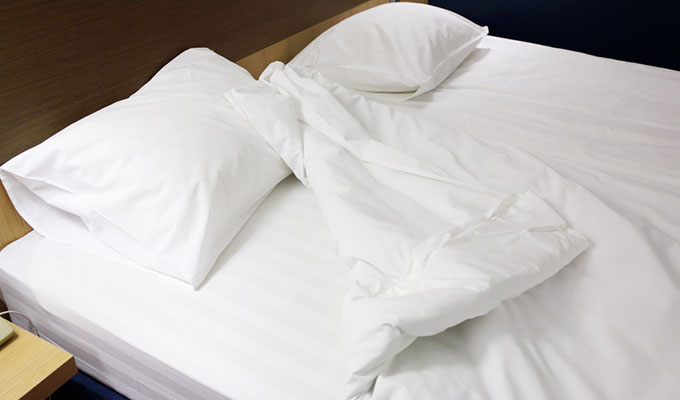Surely you wash your bed sheets on a regular basis, but when was the last time you bought a new pillow? The truth is, our pillows can be a breeding ground for all sorts of bacteria and should be replaced probably a lot more often than you may think. A good, clean pillow is key if you want great sleep and great skin. Keep reading to find out why you need to change your pillow now and how often you should make the swap.
How often should a pillow be replaced?

How often you need to replace your pillows will depend on the type. Foam pillows can last up to 18-36 months. What about a polyester pillow? They have a much shorter lifespan at only six months. While many people make the decision to buy a new pillow only when the old one has turned yellow or started to lose its form, that shouldn’t be what you rely on. There are other unseen factors that are signs you need to make the switch.
Ask yourself how long you’ve had that pillow on your bed. Is it time for a replacement? And if you still aren’t convinced, wait until you read this…
What is lurking within your pillow?

Looking at your pillow you may think it’s perfectly fine. It looks clean. They are no obvious stains. And it’s maintained its shape. However, there are many things that can be lurking inside that you aren’t able to see. Your pillow can contain build-up from oil and sweat that occurs overnight and can even accumulate dead skin. Even worse? Your pillow could actually contain dust mites. Gross!
But what if I don’t replace my pillow that often?

You take good care of your skin. You wouldn’t want that work to be undone by spending hours every night with your face pressed against a dirty pillow, would you? Definitely not! While many think a simple cleaning of a pillowcase is enough, it won’t help much if the pillow itself is dirty.
The bacteria that could be inside your pillow can cause a variety of skin issues such as clogged pores, oily skin, and breakouts. If you’ve been noticing some unexplainable breakouts, your pillow may be the culprit.
However, it’s not just your skin that you need to be worried about. Dirty pillows can actually trigger flare-ups in those that suffer from allergies. It could cause you to see redness or irritate your skin and eyes. A regular swap of your pillow can help prevent these flare-ups. You should also consider putting a zip-cover on your pillow to decrease allergens.
So, what type of pillow should I buy?

You’ll want to select the pillow that provides the most comfort and support for you. However, the great thing about foam pillows is that they don’t need to be replaced as often as polyester ones. They are more expensive though, so you may need to consider your budget.
If you can, try snagging two pillows for yourself! Clinical psychologist and author of the book, Good Night, Michael Breus, Ph.D., recommends having two different pillows. He says it’s best to start the week off with a plush pillow because our bodies are more at ease during this time. Switch to a firmer pillow later in the week to combat tension in the neck that may arise from stress at work and home.
After all, the right pillow is the key to a restful night’s sleep. And a good night’s sleep means you (and your skin) will wake up looking and feeling refreshed.